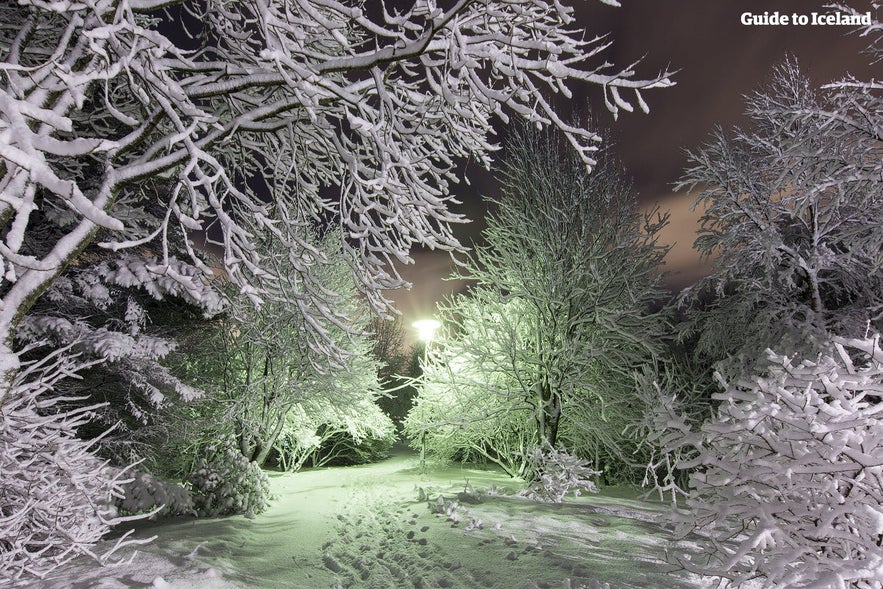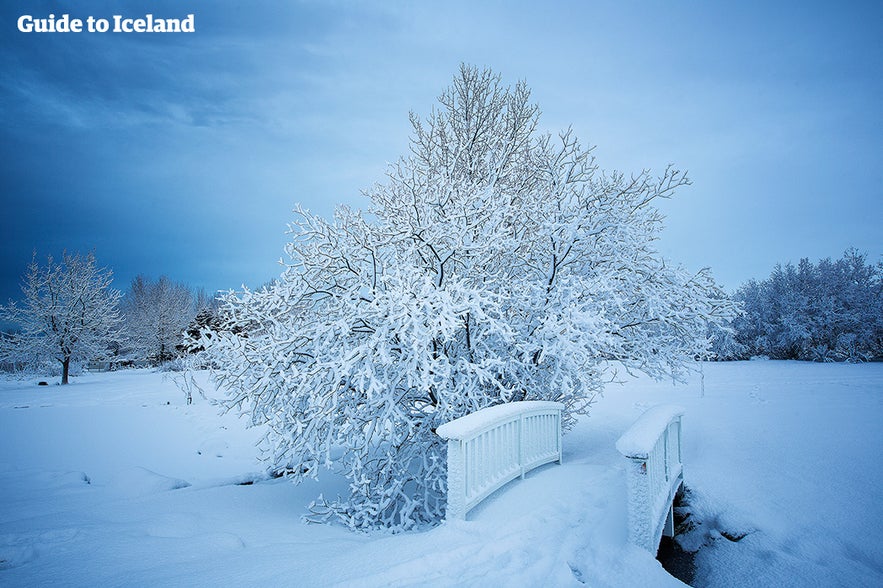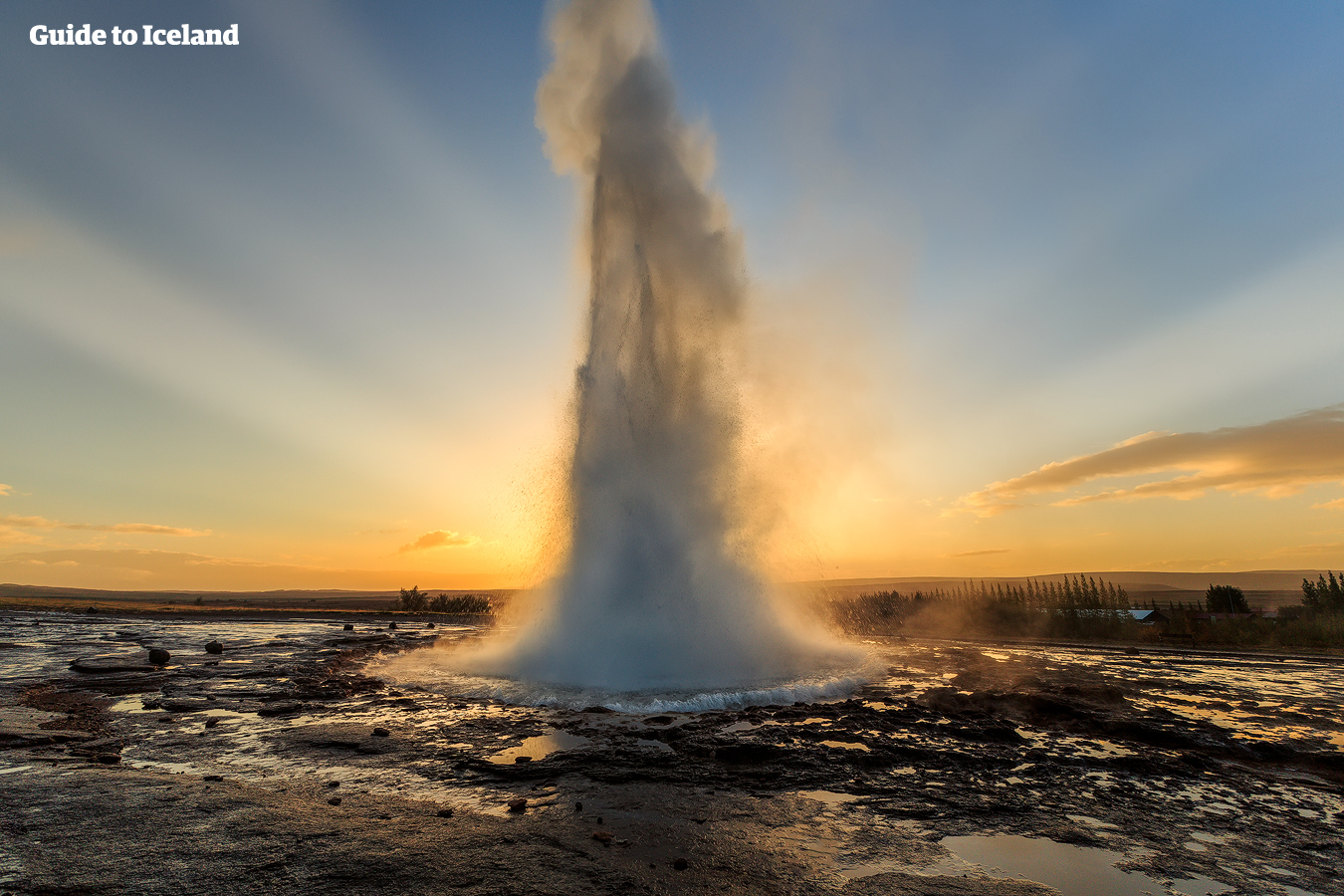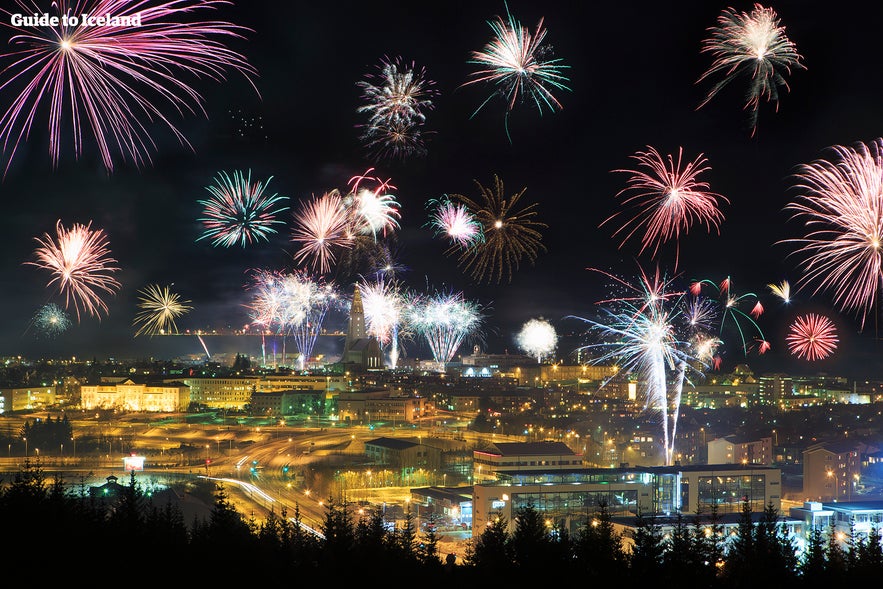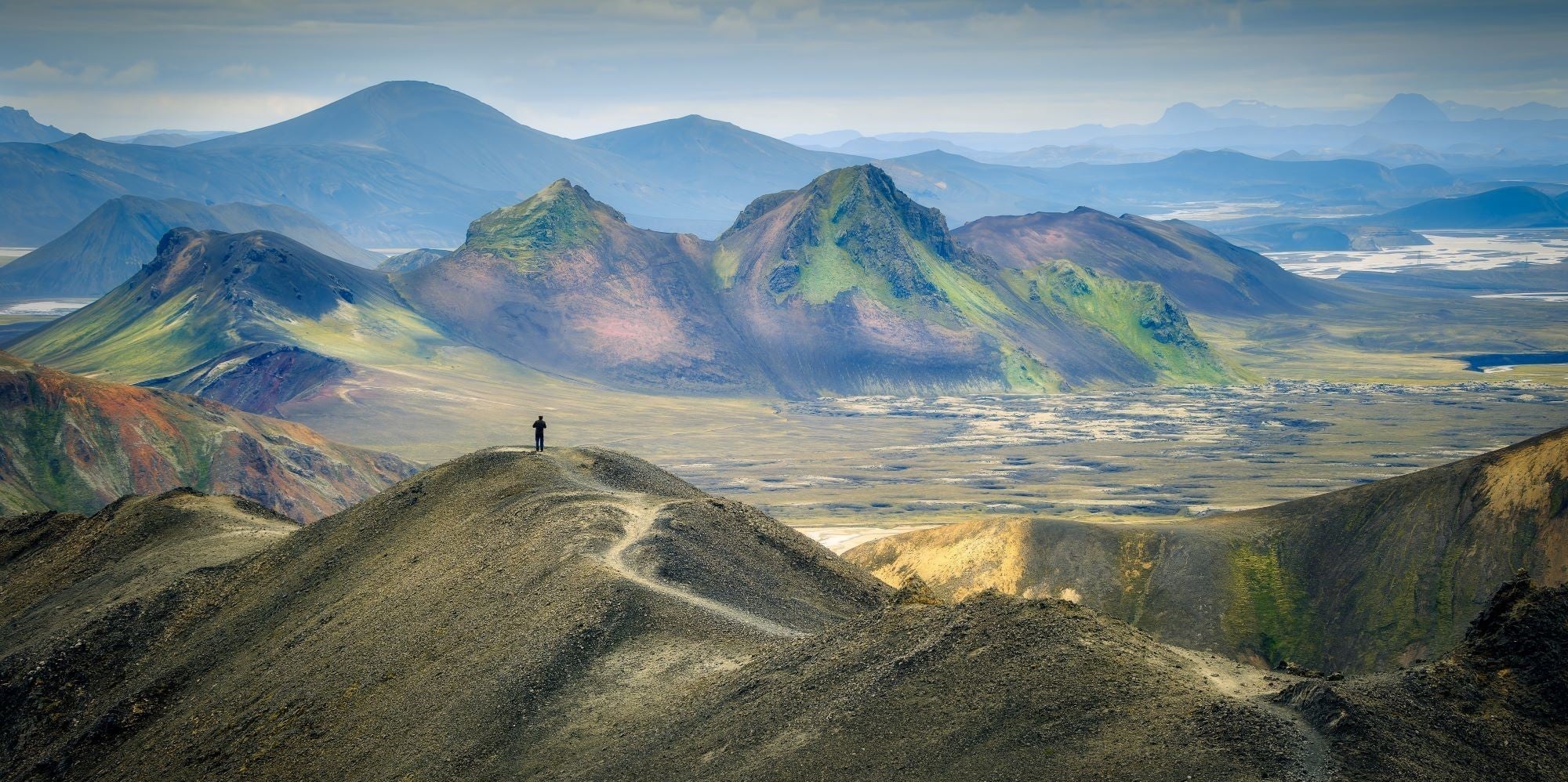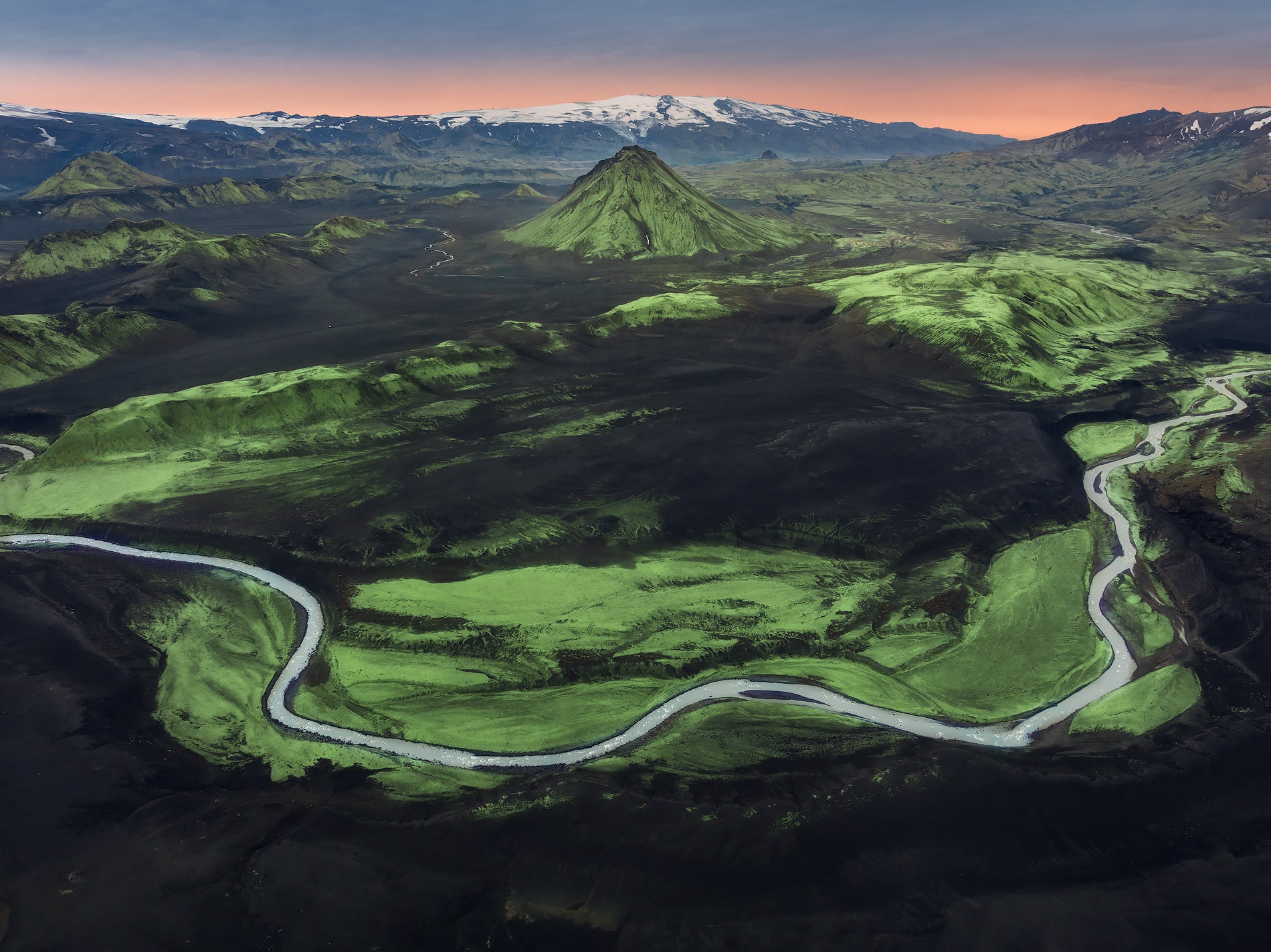When is the winter season in Iceland? What are the best things to do in winter in Iceland? What winter activities can you join? What are the best winter tours in Iceland? Read on to learn all about things to do in Iceland in winter.
Iceland in winter offers an array of exciting activities that make the colder months truly unforgettable. Whether you’re chasing the aurora with northern lights tours, exploring ice caves, or soaking in hot springs, there’s something for everyone to enjoy.
Why You Can Trust Our Content
Guide to Iceland is the most trusted travel platform in Iceland, helping millions of visitors each year. All our content is written and reviewed by local experts who are deeply familiar with Iceland. You can count on us for accurate, up-to-date, and trustworthy travel advice.
For those who want flexibility, renting a car is a great way to discover Iceland’s winter beauty at your own pace. Winter self-drive tours are a fantastic option for this, as they include detailed itineraries and recommendations for your accommodation in Iceland. This brings you the freedom to explore safely while navigating Iceland’s snowy landscapes!
If you’d rather leave the planning and driving to experts, you can find plenty of winter tours with a guide, letting you experience popular areas like the Golden Circle and the South Coast without tackling icy and snowy roads yourself.
With careful planning, Iceland’s winter adventures promise to be both memorable and manageable. Here's everything you need to know about the best activities to make the most of your winter trip!
- See more: Iceland in Winter - The Ultimate Travel Guide
- See also: What To Wear in Winter in Iceland
What To Know About Winter in Iceland

Icelandic winters are best known for the northern lights, but there’s much more to this season than meets the eye. Surprisingly, winters in Iceland aren’t as cold as you might expect for such a northern country. Thanks to the Gulf Stream, which brings warm ocean currents from the Gulf of Mexico, Iceland enjoys relatively temperate winters. That said, snowfall, icy conditions, and strong winds are common.
In comparison, northern American cities such as Boston and Chicago have a lower average temperature during winter than Reykjavik, despite Iceland’s name and location. While temperatures in Iceland during winter typically range from -10°C to 5°C, the wind chill can make it feel significantly colder, so layering up is essential!
During the height of winter, from late November to early March, you can usually expect a lot of snow and ice and stormy weather. There will also be clear and crisp days in between. This is when driving conditions in Iceland can be bad, and driving in the countryside should only be attempted by those who are familiar with driving in difficult and icy conditions.
- See more: The Weather & Temperature in Iceland
- See also: How To Drive Safely in Iceland
With that said, Iceland offers plenty of exciting winter activities beyond sightseeing and chasing the northern lights! It's easy to have a fantastic winter adventure.
For a hassle-free experience, book this amazing 5-day winter vacation package that includes must-see highlights like the Blue Lagoon, the Golden Circle, and an ice cave tour.
You can also check out this 3-day winter tour of the South Coast, which also takes you to the Jokulsarlon Glacier Lagoon and inside a blue ice cave.
- Discover the Ultimate Guide to Iceland's South Coast
- See also: Ultimate Guide to Iceland's Golden Circle
Best Winter Activities in Iceland
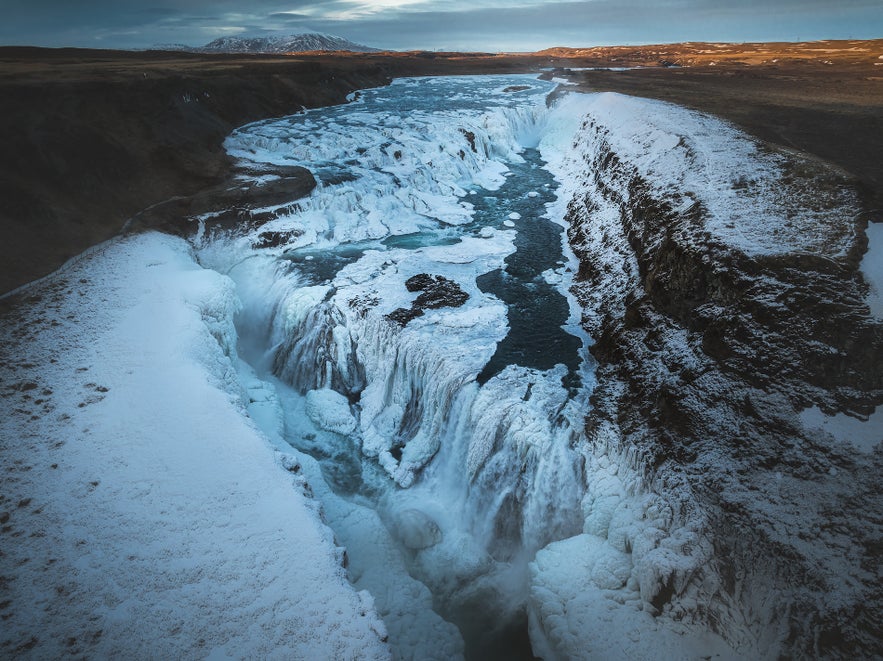 The winter months bring plenty of unique and exciting experiences that you won't want to miss out on during a visit. These are the best winter activities for your trip to Iceland!
The winter months bring plenty of unique and exciting experiences that you won't want to miss out on during a visit. These are the best winter activities for your trip to Iceland!
Visit Natural Ice Caves in Icelandic Glaciers
The natural ice caves that can be found in Iceland's glaciers are among the country’s most breathtaking. Every winter, ice caves form in Vatnajokull Glacier, Europe's largest glacier. And every summer, they melt or even fall apart. The best time to visit ice caves in Iceland is during the winter months.
Each ice cave is entirely unique, varying in size, shape, and shades of blue, creating a mesmerizing experience for visitors. Most caves are accessible from October or November until March, making them a must-see during Iceland’s winter season.
One of the highlights of the season is the Crystal Blue Ice Cave, renowned for its dazzling ice walls and striking colors. These natural formations are never the same twice. The glacier’s constant movement reshapes the caves each year, so no two tours are ever alike.
Booking an ice cave tour in the Vatnajokull Glacier is a once-in-a-lifetime experience, and this experience ensures you’ll see the very best conditions available on the day. Tours are in high demand, so reserve well in advance.
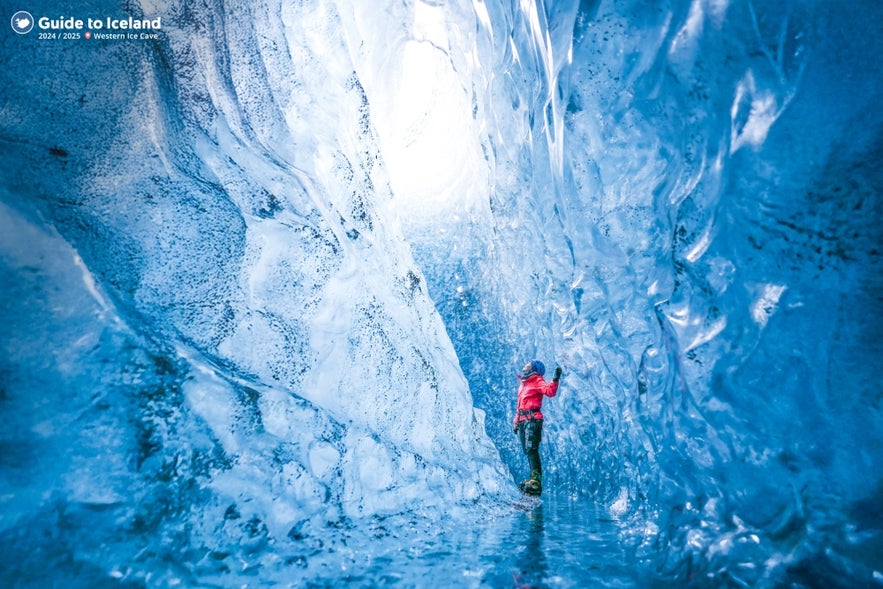 Vatnajokull Glacier is located in South Iceland, near the town of Hofn, about a 5–6 hour drive from Reykjavik. Along the way, you’ll encounter other incredible sights, such as waterfalls, hot springs, and dormant volcanoes. For a complete experience, consider a two-day trip to explore the region or take a day tour if time is limited.
Vatnajokull Glacier is located in South Iceland, near the town of Hofn, about a 5–6 hour drive from Reykjavik. Along the way, you’ll encounter other incredible sights, such as waterfalls, hot springs, and dormant volcanoes. For a complete experience, consider a two-day trip to explore the region or take a day tour if time is limited.
Join Guide to Iceland for an unforgettable ice cave adventure and experience the best of Vatnajokull Glacier’s natural wonders this winter!
- Check out the Ultimate Guide to Ice Caves in Iceland
Witness the Northern Lights in Iceland
The northern lights are a breathtaking natural phenomenon, but they can be highly unpredictable. Clear skies are essential to see them, and their visibility depends on the strength of the aurora activity.
Despite the uncertainty, many travelers visit Iceland with the hope of witnessing these magical lights, and for good reason. On a good night, the northern lights can illuminate the sky with vibrant colors ranging from green and white to pink and purple.
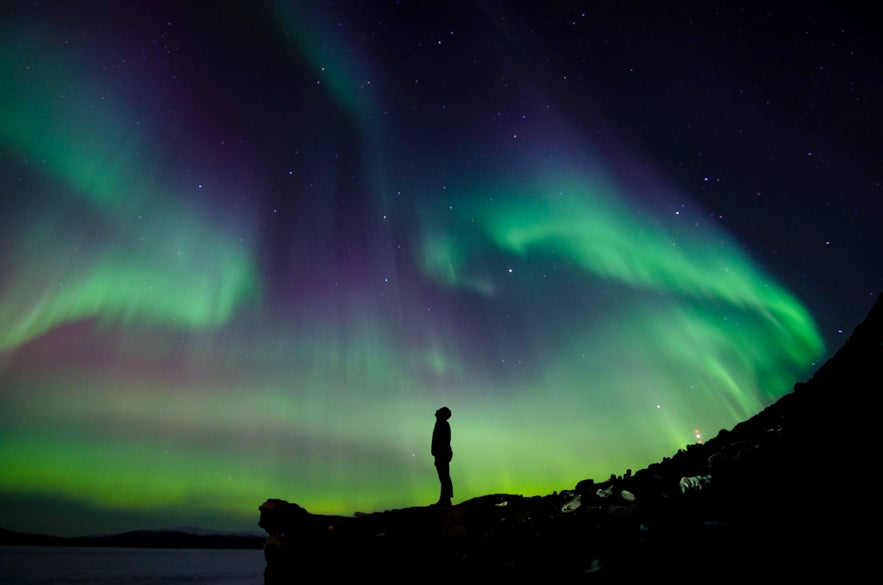
It’s important to treat the northern lights as a bonus rather than a guarantee, as sightings can’t always be planned. However, the longer you stay in Iceland, the better your chances of seeing them.
For the best odds, plan to spend at least a week in the country, giving yourself multiple opportunities to catch the aurora borealis in action by either driving to areas with no light pollution or going on northern lights tours.
For an even greater chance of seeing the northern lights, consider staying in northern lights hotels. These accommodations are located in areas with minimal light pollution, offering better viewing conditions than hotels in central Reykjavik. With some planning and a little luck, the northern lights can be a spectacular highlight of your Iceland adventure.
- Check out the Best Places To See the Northern Lights in Reykjavik
- Or read more: Northern Lights in Iceland - When & Where To See the Aurora in Iceland
Bathe in Hot Springs in Iceland
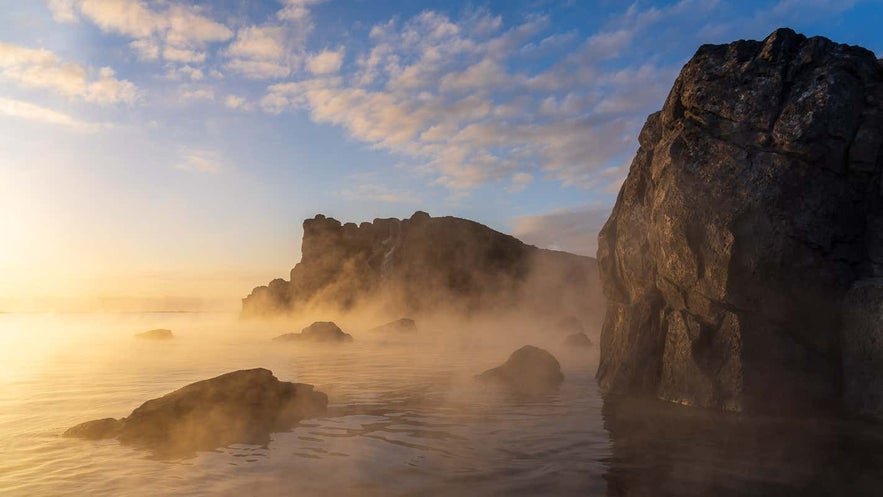
Winter isn't all about ice and snow! You can bathe in hot springs all year round, but they are especially delightful in the wintertime. The most famous geothermal spa in Iceland is the Blue Lagoon, which also happens to be Iceland's most visited attraction.
Planning a visit to the Blue Lagoon, Iceland’s most famous geothermal spa and top tourist attraction, is a must-visit. As it is very close to Keflavik International Airport, it's also often visited just after arrival or before departure. You can also pair a visit with other activities, such as Golden Circle tours or horseback riding.
For a more modern experience, the Sky Lagoon, located within the Capital Region, has quickly become a favorite since opening in 2021. This luxurious geothermal spa features an infinity pool overlooking the ocean, complete with an in-water bar.
With your Sky Lagoon ticket, you'll be able to enjoy its famous seven-step relaxation ritual and its quality skincare products, which make the perfect souvenir after a visit.
- Learn more about the VIP Club: Save Big on Exclusive Offers & Discounts
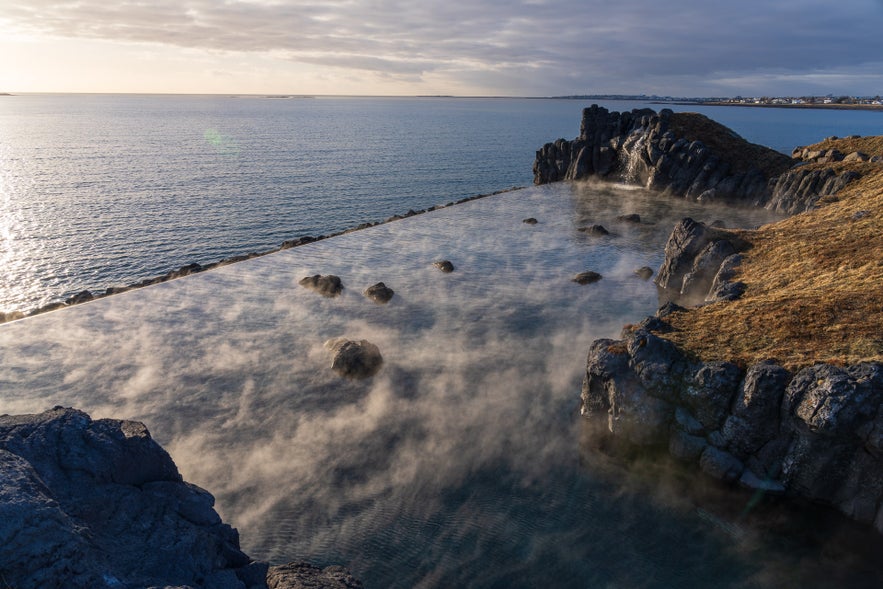 If you’re looking for a hot spring surrounded by untouched nature, Hvammsvik Hot Springs is an excellent choice. Located in the Hvalfjordur Fjord, a short drive from Reykjavik, Hvammsvik offers eight natural pools of varying temperatures that blend into nature. You can easily visit by booking your Hvammsvik admission with a transfer.
If you’re looking for a hot spring surrounded by untouched nature, Hvammsvik Hot Springs is an excellent choice. Located in the Hvalfjordur Fjord, a short drive from Reykjavik, Hvammsvik offers eight natural pools of varying temperatures that blend into nature. You can easily visit by booking your Hvammsvik admission with a transfer.
Then there is the Earth Lagoon, the North's answer to the Blue Lagoon. Formerly known as Myvatn Nature Baths, this spa is not as crowded and is located in a beautiful natural setting.
Nearby is the stunning Lake Myvatn, one of Iceland's most incredible areas. There are many gorgeous sights in the area, including the impressive Dimmuborgir Rock Formations and the Skutustadagigar Craters.
On the way to the Golden Circle, you can find the Fontana Geothermal Baths, located by Lake Laugarvatn. They are a perfect addition to a tour of the Golden Circle.
What's most notable about this geothermal spa is that the baths are built above a natural steaming hot spring. There is also a pool to lounge in with a view over the lake itself. You can book a tour of the Golden Circle with a relaxing soak at Fontana, which is a great way to end the day.
In addition to the hot springs, there are a number of swimming pools in Iceland that all include at least a few hot tubs and steam baths. There's a swimming pool in almost every town, with multiple ones in larger locations like Reykjavik. This is a cheaper option than the natural baths and where you will meet a lot of locals, some of whom go there daily!
- Check out the Best Swimming Pools in Reykjavik
- See also: The 30 Best Hot Springs and Geothermal Pools in Iceland
Go Glacier Hiking in Iceland
Iceland has many glaciers, the biggest ones being Vatnajokull, Langjokull, Hofsjokull, and Myrdalsjokull. Hofsjokull is the hardest one to reach as it is in the interior of Iceland, but the other ones are fairly easily accessible for travelers. Most glacier hiking tours during the winter are at Solheimajokull in South Iceland, which is a part of the Myrdalsjokull Glacier.
Even on a sunny and clear day, you need to make sure that you are dressed warmly and take extra layers of clothing with you, since you never know if the weather is going to change. As you can imagine, it can get pretty cold on top of a glacier!
Also, make sure that you wear good hiking boots that cover your ankles. You will be provided with crampons to attach to your boots, making it easier to get a grip on the snow and ice.
- Learn more about What to Wear for Glacier Hikes in Iceland
- See also: The Ultimate Guide to Glacier Tours in Iceland
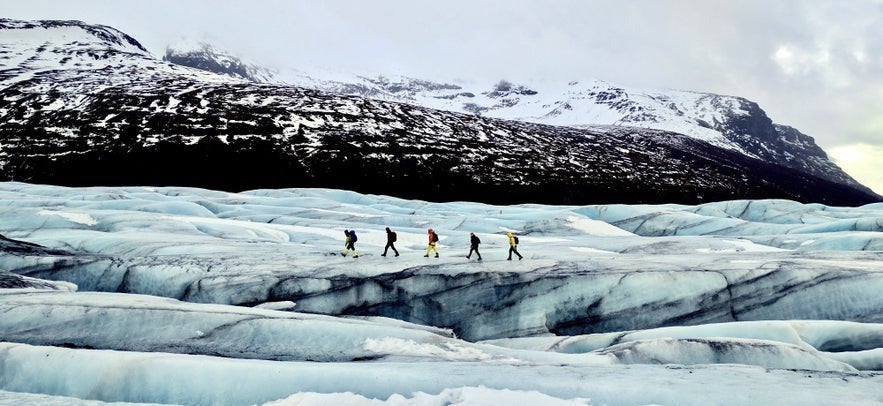
Glaciers are continually moving, crawling forward, and melting, creating incredible landscapes in the process! When on a glacier hiking tour, you'll definitely see ice and snow, as well as a lot of sand, ash, or rocks carved by the ice, like paint on a white canvas.
The ice can also contain deep cracks and crevasses that may be hidden with snow, so it's incredibly important that you go with a guide who knows the glacier well and can take you on a safe route, such as this hiking tour on Solheimajokull Glacier.
To experience a snowy white winter landscape that isn't easily found in most places around the world, you should definitely look into going on a glacier hiking tour! You can even try your hand at ice climbing as well, with an ice axe in hand!
Experience Dogsledding in Iceland
 Photo from Unforgettable 2-Hour Siberian Husky Dog Sledding Tour in the Myvatn Area
Photo from Unforgettable 2-Hour Siberian Husky Dog Sledding Tour in the Myvatn Area
Any nature and dog lover shouldn't miss out on exploring the icy landscapes of Iceland with the help of some furry friends! Iceland is an excellent place to go dogsledding, especially in winter when there's plenty of snow.
One of the best experiences is this 2-hour Siberian Husky tour by the Lake Myvatn area, where there are only 1-3 people on each sled. These energetic dogs love the excitement of running through nature, and they're well taken care of. Availability of tours is usually limited to a few times per week to ensure that the dogs aren't overworked and remain excited for each trip.

Photo from Thrilling 1.5-Hour Dog Sledding Tour Near Reykjavik
If you're not traveling to North Iceland during your visit, you can also go on this thrilling 1.5-hour tour near Reykjavik. The starting point is on the edge of Mosfellsbaer Town, and if there's heavy snow, you'll need to rent a 4x4 vehicle to reach it, but it's well worth it.
On both tours, your musher will introduce you to the basics of dog sledding and how to work with these remarkable animals. You'll then be whisked away into nature, with plenty of opportunities for photos. At the end, you'll get a chance to pet the dogs as a thanks for the excellent work.
This type of tour is ideal for families with children or any adventure seeker looking to do something different, and it's sure to be a memorable experience.
- Learn more about Dog Sledding in Iceland
Try Snowmobiling in Iceland
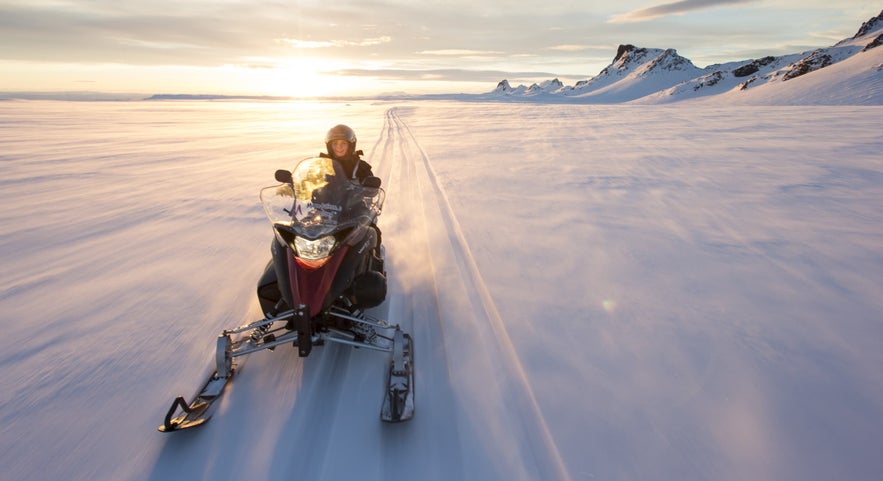 Photo from 10-Hour South Coast Tour with Glacier Snowmobiling on Myrdalsjokull with Transfer from Reykjavik
Photo from 10-Hour South Coast Tour with Glacier Snowmobiling on Myrdalsjokull with Transfer from Reykjavik
Snowmobiling tours are a year-round activity available around the country, with some of the most popular locations being on the Langjokull and Myrdalsjokull Glaciers. These are great trips to go on if you want a little bit of action and adrenaline, but also want to enjoy the landscape!
On clear days, the views from the top are truly spectacular. This activity combines action and adrenaline with the opportunity to enjoy Iceland’s incredible landscapes at your own pace, as you’ll be in control of your snowmobile. It’s a fun and adventurous way to experience a glacier up close.
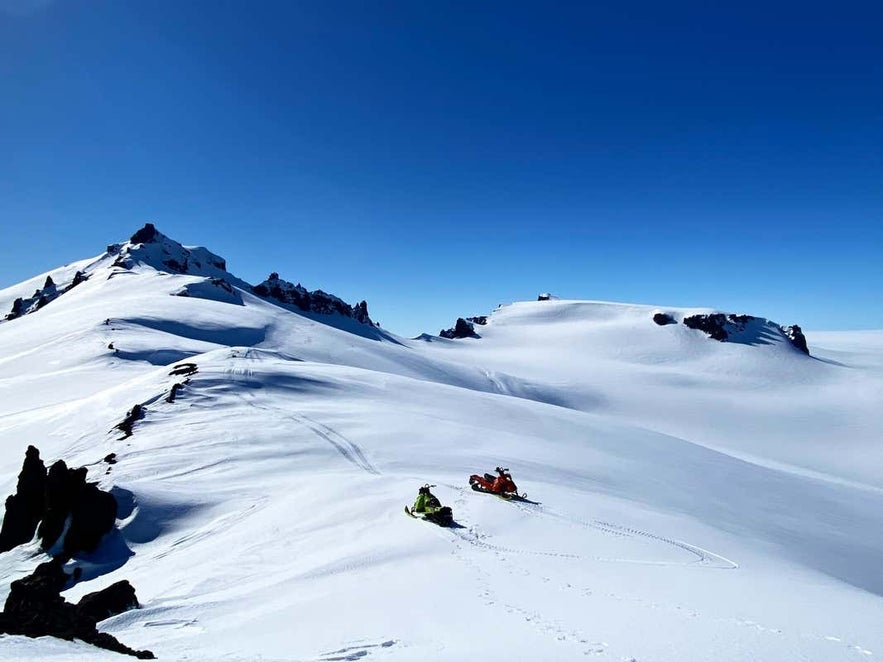
Photo from Thrilling 3-Hour Super Jeep Tour with Glacier Snowmobiling on Vatnajokull
If you want to maximize your experience, this snowmobile tour is combined with the Golden Circle, so you'll be able to experience some of Iceland's most famous locations with a fun excursion on the Langjokull Glacier!
While there are many great options in South Iceland, you'll also find options in the North. This 1-hour snowmobile tour of North Iceland offers transfers from Akureyri, and it's an excellent addition to your travel itinerary.
- Learn more about Snowmobiling in Iceland
Discover Snorkeling and Diving in Iceland
Snorkeling and diving tours might not be the first activities that come to mind for winter in Iceland, but both are available year-round! Iceland's most famous diving location is Silfra, a crystal clear ravine at Thingvellir National Park. You'll be where you can dive or snorkel between tectonic plates with amazing visibility of the colorful cliffs!
The water in Silfra stays the same temperature all year round, only about 35°F (2°C), so there's not much difference in diving there, whether it's during the summer or the winter. The dives and the snorkeling are often done in dry suits that will keep you warm despite the almost freezing water, though you can also find tours with wetsuits.
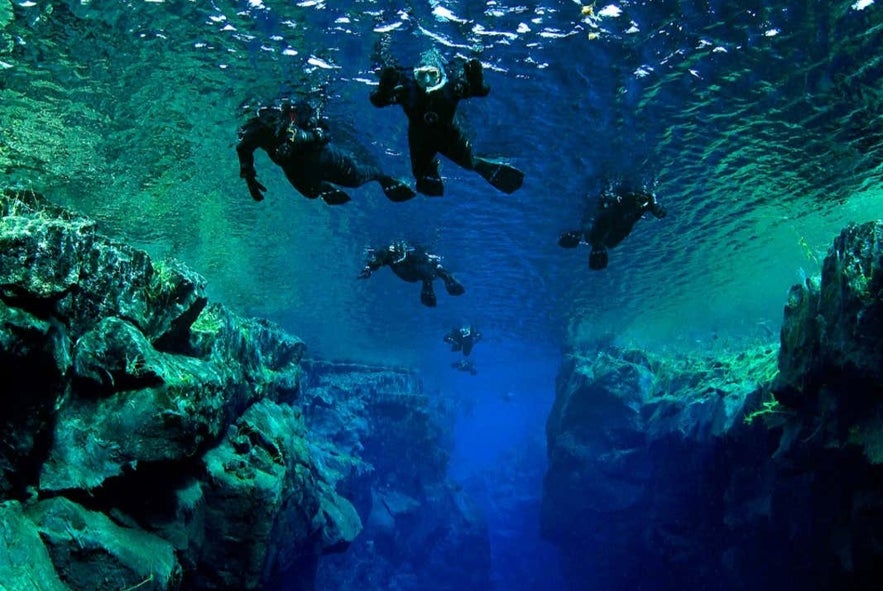
Photo from Unforgettable Silfra Snorkeling Tour with Underwater Photos & Transfer from Reykjavik
This popular Silfra snorkeling tour is a fantastic option, as it includes a transfer from Reykjavik, and you'll get great underwater photos to remember the experience!
If you want to experience diving in the fissure, you will need to have a PADI Open Water dive certification or equivalent to participate. This 3-hour guided Silfra diving tour is a good option, especially as you'll be able to enjoy hot drinks afterward!
- Check out more about Scuba Diving and Snorkelling in Iceland
Go Skiing and Snowboarding in Iceland
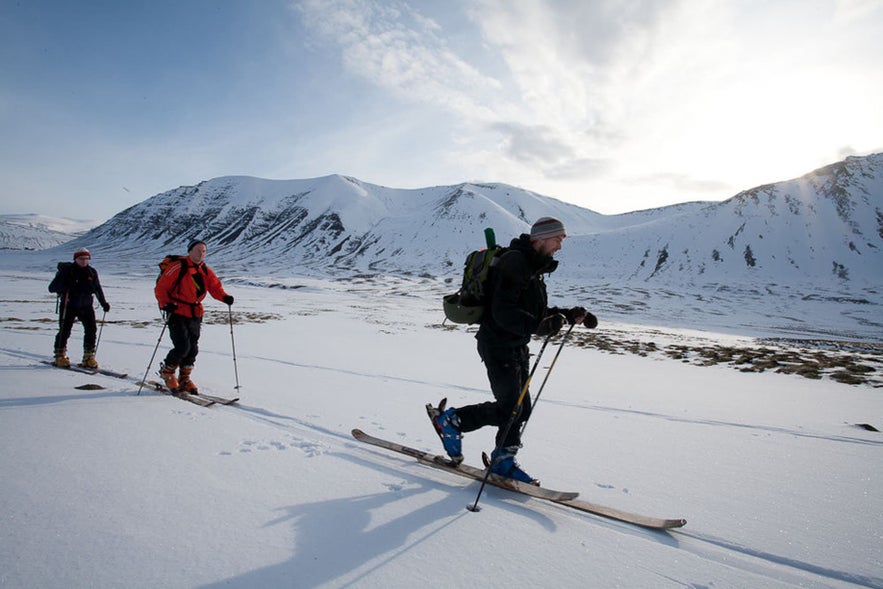
Surprisingly, skiing and snowboarding are not massively popular among visitors to Iceland, or at least not in Reykjavik. The reason: Not enough snow!
Although Iceland gets a fair bit of snow each year, the country's temperate weather means that the snow tends to melt every few days, and not enough stays put for a stable ski season. On top of that, the weather is sometimes too windy to open the ski resorts.
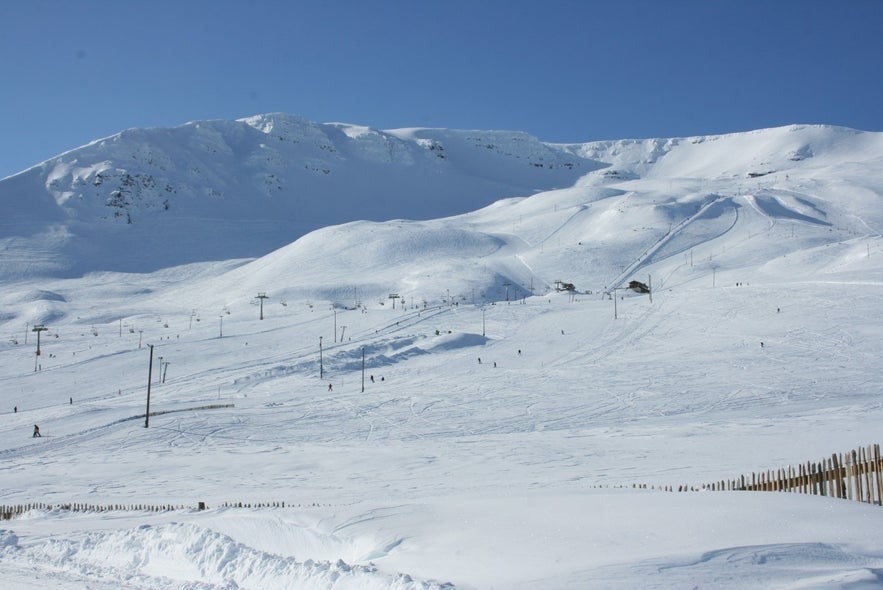
Photo by Bryndís Birgisdóttir
However, there are at least a couple of great ski resorts in Iceland that are worth visiting. The main skiing area near Reykjavik is in the Blafjoll Mountains, and it's very popular. The best ski resort in Iceland, however, is Hlidarfjall. It's located above the town of Akureyri in North Iceland.
All ski resorts are moderately priced, and you can choose to get a 1, 2, or 3-hour pass. You can also rent gear, including skis and snowboards. If you have a Reykjavik rental car, you can reach the Blafjoll skiing area within an hour's drive from the downtown area. Hlidarfjall is located a short drive from Akureyri, making it easy to reach if you're up north.
- See more: Skiing and Snowboarding in Iceland
Head Out to Sightsee in Iceland
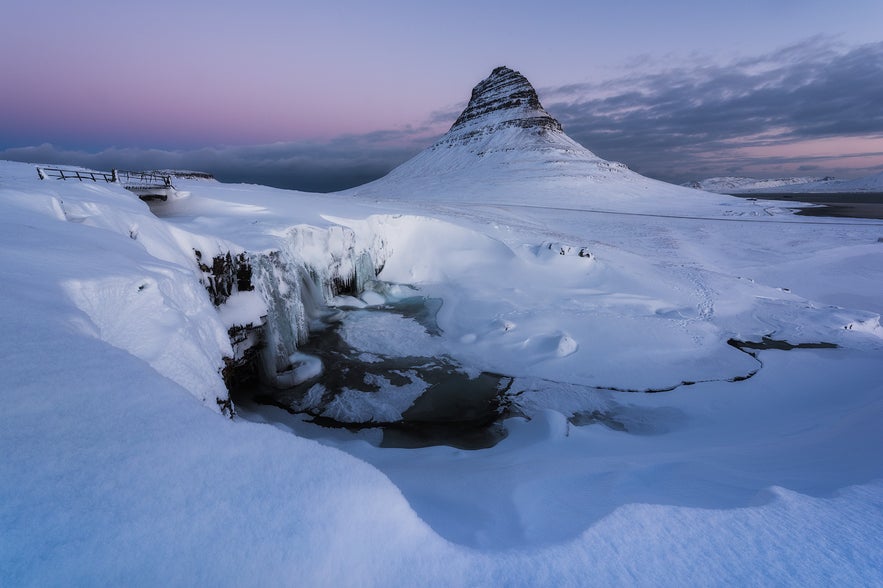
Now you should know that there is no shortage of fun activities you can engage in while visiting Iceland during the winter. However, in the end, Iceland's strength is its unique natural beauty, and that is also on full display during winter.
Therefore, we definitely recommend taking the time to either go on sightseeing tours of some of the natural wonders around the country or rent a 4x4 vehicle and go on your very own self-driving tour during winter and see the winter wonderland for yourself!
The most famous sightseeing route in Iceland, the Golden Circle, consists of Thingvellir National Park, the beautiful Gullfoss Waterfall, and the Geysir Geothermal Area, where the Strokkur Geyser erupts every few minutes.
Gullfoss Waterfall is especially impressive during wintertime, as it's surrounded by icicles, and the thundering water bursts through layers of thick ice! Strokkur never fails to spout scolding hot water up in the air, no matter what the temperature is above ground. And Thingvellir National Park, a UNESCO heritage site, is one of the only places on earth where you can walk between the North American and Eurasian tectonic plates.
- See more: Top 11 Frozen Waterfalls in Iceland To See in Winter
- See also: Tectonic Plates in Iceland and Where To Find Them
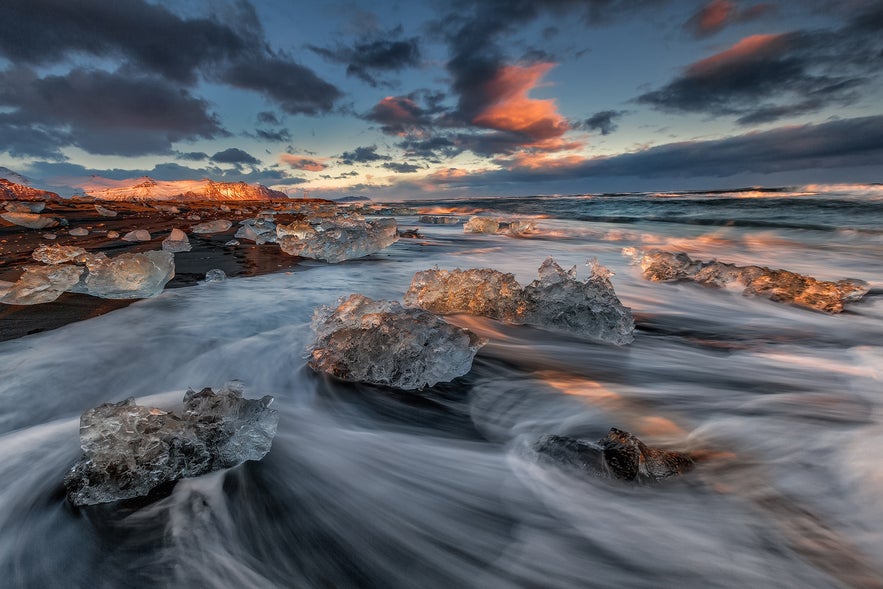
The South Coast has the beautiful waterfalls Seljalandsfoss and Skogafoss and the stark Reynisfjara Black Sand Beach with the picturesque Reynisdrangar Sea Stacks near the shore. In the south, you can also find the Jokulsarlon Glacier Lagoon and the nearby Diamond Beach.
Driving along the South Coast is a beautiful adventure, but you can also book South Coast tours for a more convenient trip. It's a great option if you want someone else to take care of the driving in the winter conditions, like with this small-group South Coast tour in a minibus!
Christmas and New Year's Eve in Iceland
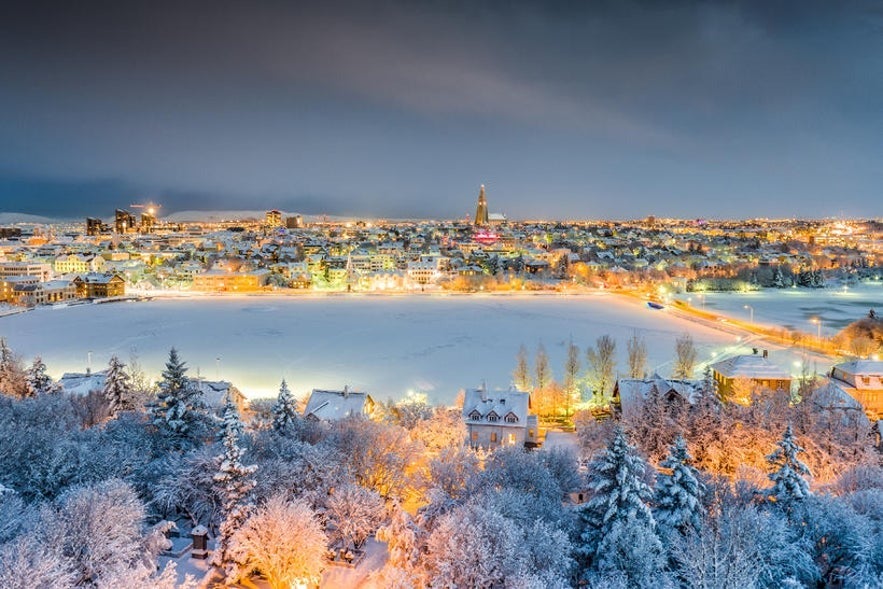
Photo by Ólafur Haukur Mýrdal
If you want to plan a Christmas or New Year's vacation in Iceland, you'll have a truly magical time experiencing the country’s unique traditions and festive atmosphere. Streets and homes are beautifully decorated with twinkling lights, and Christmas markets offer delicious treats, handcrafted gifts, and plenty of holiday cheer!
You'll find special events around the capital region, and it's common for restaurants in Reykjavik to offer special holiday menus through November and December. Many of the best spots are part of the VIP Club, so make sure to check for exclusive discounts and offers for a fantastic dining experience.
To enjoy the season, we highly recommend getting familiar with the local culture. Icelandic Christmas traditions include the 13 Yule Lads, mischievous characters who leave small gifts (or potatoes!) in children’s shoes during the 13 nights leading up to Christmas, and they can sometimes be seen in the Christmas markets in town. You may also spot their infamous mother, Gryla, who likes to eat children who have been bad!
- Find the Best Restaurants in Reykjavik
- See also: Best Restaurants in Iceland Open During Christmas & New Year's
As Christmas transitions into New Year’s celebrations, the festivities shift into high gear. On New Year’s Eve, Icelanders gather with family and friends for dinner before heading out to bonfires, a long-standing tradition that brings communities together. These bonfires, found in neighborhoods across Reykjavik and beyond, are a great way to experience Icelandic culture and meet locals.
When midnight approaches, the real spectacle begins. Icelanders light up the sky with an incredible display of fireworks launched from almost every street corner. Reykjavik transforms into a sea of sparkling lights, with fireworks going off in every direction well into the early hours of the new year.
This is what makes December a fantastic time to enjoy the magic of Iceland and take in the festive cheer of the season!
- Learn more about Christmas in Iceland and New Year's Eve in Iceland
- See also: The Icelandic Yule Lads and Gryla | Iceland's Christmas Trolls
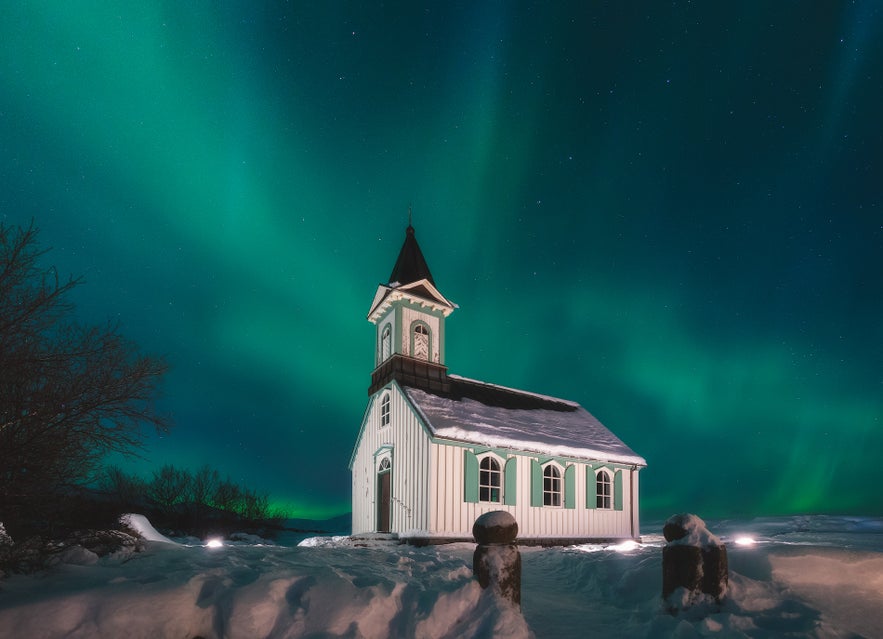 Iceland offers an incredible range of winter activities that showcase its stunning landscapes and unique culture. Whether you’re exploring ice caves, hiking glaciers, soaking in geothermal hot springs, or marveling at the northern lights, there’s something for every type of traveler.
Iceland offers an incredible range of winter activities that showcase its stunning landscapes and unique culture. Whether you’re exploring ice caves, hiking glaciers, soaking in geothermal hot springs, or marveling at the northern lights, there’s something for every type of traveler.
With proper planning, including renting a car and booking accommodations in advance, you can experience the best of what Iceland has to offer during the winter months, creating unforgettable memories in this remarkable destination!
Will you visit Iceland next winter? Which of these activities would you like to try? Have you been to Iceland before? Is there something we missed on our list? Share your thoughts and experience in the comment section below!

